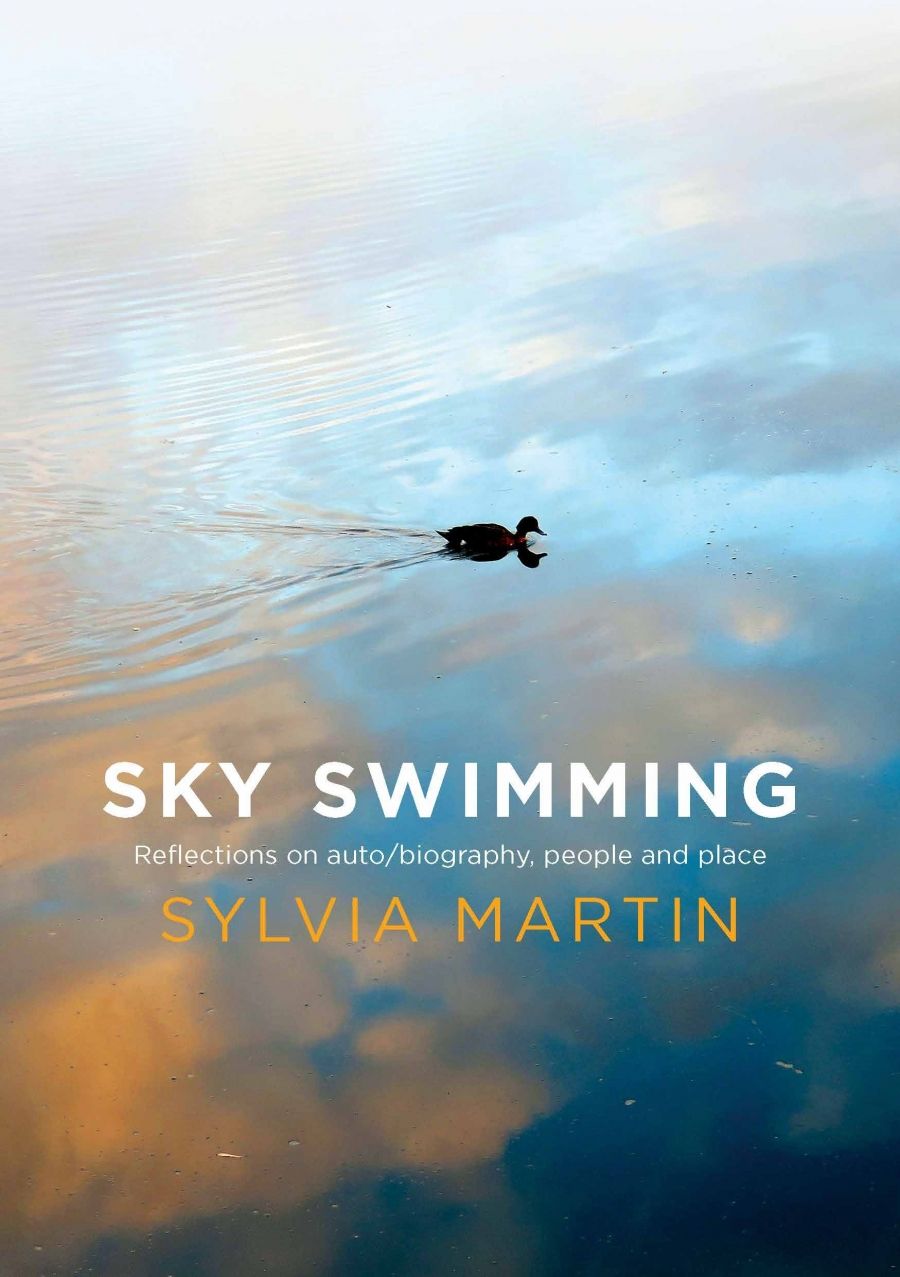
- Free Article: No
- Contents Category: Memoir
- Review Article: Yes
- Custom Highlight Text:
Queer memoir is particularly given to formal play, to unpacking and upsetting the conventions of genre in order to question women’s roles as both narrator and subject. Maggie Nelson’s The Argonauts (2015) mixes scholarship and bodily transformation. Carmen Maria Machado’s In The Dream House (2019) unpacks the nature of narrative itself to reflect on an abusive relationship. Into this field comes Sky Swimming, Sylvia Martin’s ‘memoir that is not quite a memoir, more a series of reflections in which I act as a biographer of my own life’. For Martin, the critical distance of the biographer enables her to consider the resonances that exist between her own experiences.
- Featured Image (400px * 250px):

- Book 1 Title: Sky Swimming
- Book 1 Subtitle: Reflection on auto/biography, people and place
- Book 1 Biblio: UWA Publishing, $24.99 pb, 205 pp
- Book 1 Readings Link: booktopia.kh4ffx.net/km5dx
The essays in the first half of the book focus on objects. For Martin, these are totemic presences holding the past and bearing it into the now. To frame discussions of her youth, she considers pottery, music, photographs, quilts, fragments of amber. There is a museological quality to these reflections, as of a guide breathing life into trinkets laid out in velvet-lined display cases. As the collection progresses, this format gives way to a more wide-ranging discussion of the nature of biography and the urge to write.
Sky Swimming holds at its core the notion that no story stands alone. Each memory unfolds into countless others, brushing up against each other, making contact. If a memoir is a form of authorship that prioritises a single perspective, perhaps biography is the form that best recognises the village it takes to raise a child and the multitudes it takes to tell a story. Martin’s biography is heavy with accumulated individuals. The Boyd family, composer Benjamin Britten and his partner, Peter Pears, and a cohort of family, lovers, and friends accompany her into the past. She worries about the holes in their narratives as doggedly as about those of her subjects. Martin concentrates on the women, the gaps in their timelines, the things unknown. ‘I come from a matriarchal line, aware from childhood of the sparking static of strong women rubbing up against each other.’ The text bristles with women – as subjects, as artists, as writers. As was ‘Lorelei’, the house she built with her partner Lizzie in rural New South Wales, Martin’s text is ‘a women’s space’.
Several essays preoccupy themselves with Aileen Palmer, the subject of Martin’s book Ink in Her Veins (2016), and clearly still a subject for her of intoxicating fascination. While a painting of Palmer is the focus of one essay, it is evident that Palmer, for the author, continues to acquire meaning and resonances. In Sky Swimming, this culminates in a piece titled ‘Love in the Blitz’, a dreamy piece of short romantic fiction imagining Palmer’s relationship with a woman known to history only as ‘B’. Along with Lizzie, Palmer is evidently one of the central women in Martin’s life – frustrating, elusive, and ever-desired.
‘As a biographer,’ Martin writes, ‘I try to interpret aspects of a person’s life from clues gathered from archives, from material that is full of gaps and silences.’ The ‘sleuthing’ work of the biographer, however, creates a curious distance when the writer is also the subject. The more we examine Martin’s email correspondences, the descriptions gleaned from friends about her home and her writing, the objects she encounters and carries with her, the less we know of her. She describes how reading interviews with the Boyds and their contemporaries helped to ‘frame and understand my memories of my own childhood’. For the reader, however, these secondary sources often exclude us from Martin’s internal world. Her rigorous personal research, the letters, the history, and the objects laden with traces, conceal more than they reveal.
Martin notably eschews the pull towards first-person narration. Some of the book’s most elegant, impactful writing – about the death of Martin’s mother, the destruction of ‘Lorelei’, and an early crush on a drama teacher that ‘nudged the edge of my consciousness and lay there teasing’ – is also its shortest, condensed in favour of practicalities and proofs, letters, and transcriptions. Martin’s interest in postmodern and feminist writing, her fascination with a type of critical autoethnography, sit uneasily on the page with her embodied experience. She takes shelter in the biographer’s modus operandi. ‘The writing that does take notice of the body and its reactions to the environment sparkles, breaking free of the structured rigour of the surrounding text.
In ‘Talking Place’, Martin describes ‘the movement across spaces as constitutive of my subjectivity – my geography of desire’. Martin searches for a ‘women’s space’ not only in the physical world but also in the literary canon – a place where ‘lesbian desire’ has authority and agency. Sky Swimming tracks the movement through memory, history, fascination, and obsession. Though enigmatic, it comes together as a collection centred on the primacy of women’s stories: of visibility, belonging, and acceptance.


Comments powered by CComment